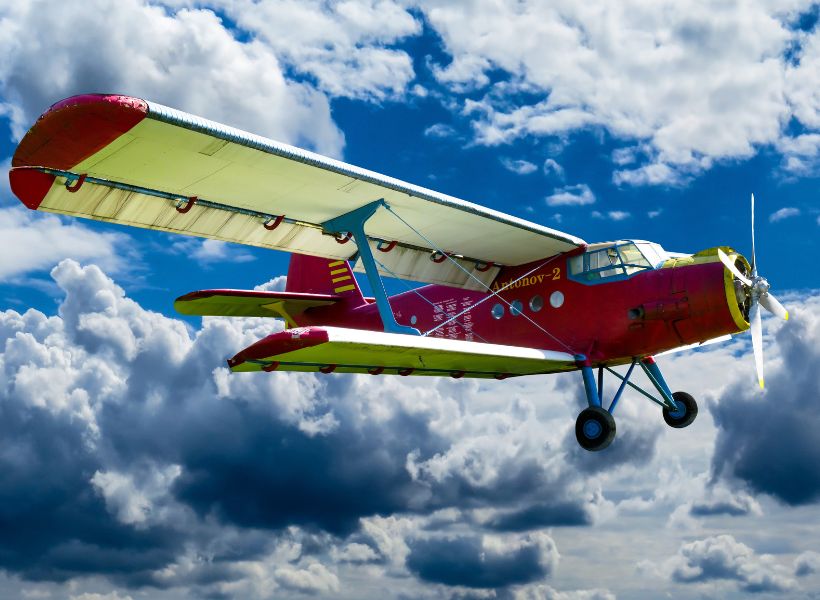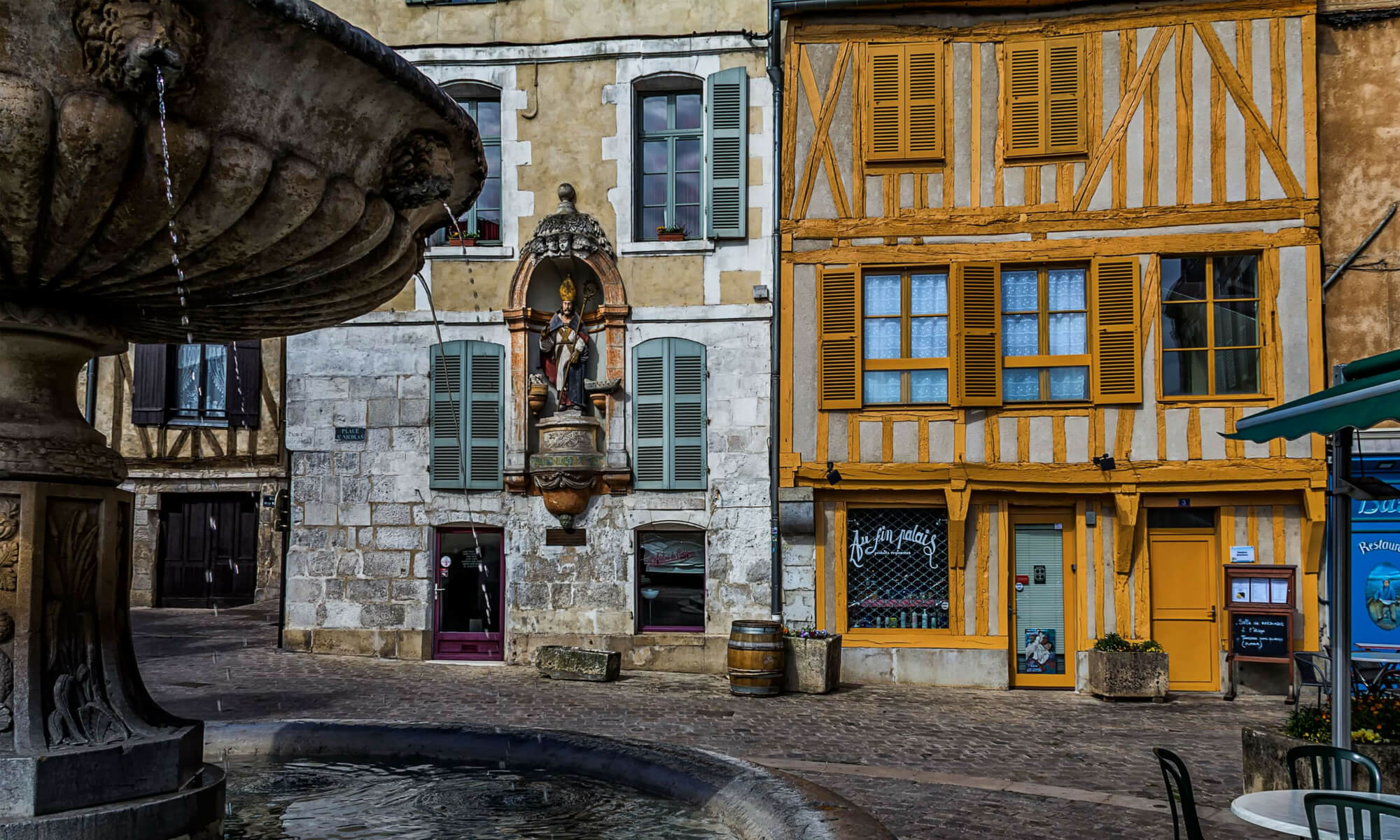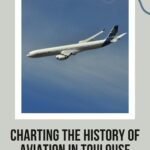Categories: French History, Toulouse
This episode features our frequent and very popular guest Elyse Rivin. If you enjoy her episodes, please consider supporting her on Patreon.
Some of you might know that Toulouse is home to Airbus, the huge conglomerate that produces airplanes and many other flying devices. But did you know that Toulouse and the region around it are both the birthplace and the home of all industry that touches on flying machines since the beginning?
Airbus, Airbus Defence and Space, and its subsidieries and affiliates are the biggest employer in the region with over 35,000 people and it is thanks to this industry that the economy of Toulouse is so dynamic.
Places to Visit Related to Aviation in Toulouse
You can arrange a visit of the Airbus factory in Blagnac, near Toulouse. Reservations required and you'll need to bring your passport.
Aeroscopia: A comprehensive museum of the history of aviation in Toulouse. Situated in Blagnac, not far from the airport and Airbus –It has a Concorde, a Beluga transport plane, and now a 380 as part of the exhibit with planes that go back to the very beginning. And a lot of interactive and informative material.
Aeronautic museum of Montaudran: recently remodeled and opened, this is the site of the original factory and flying test space going back to the beginning of the 20th century
The Cité de L’Espace: a large, interactive museum and site that is dedicated to space exploration, satellites and scientific research.
Names and Places Connected to the History of Aviation in Toulouse
Antoine de St Exupery: The writer was first and foremost a pilot in the golden age of air travel development.
Jean Mermoz: A friend and fellow pilot who braved the Andes mountains
The Hotel des Grands Balcons: This recently renovated boutique hotel was the home for all the experimental test pilots like St Exupery and Mermoz
The Piste des Géants: This space next to the airfield of Montraudran, now dedicated to the giant machines, was the take-off and landing strip for all the first experimental flights.
How Toulouse came to be the Home of Aeronautics in France
By a twist of fate and a chance, Toulouse became, starting at the end of the 1800’s, the capitol of a region where experiments were done in an attempt to create a “flying” machine.
Since almost forever, humans have fantasized about flying; first in trying to emulate birds in flight (as Da Vinci tried to do). By the end of the Renaissance the idea that it would be possible to build a structure that could fly fascinated and obsessed many scientists and dreamers as well.
Most of the earliest attempts to “fly” were weird structures that ressembled bats or birds with cloth wings that moved. Apparently, there is even documentation of a man in the 800’s, in Andalusia, who jumped from a hill with a cloth contraption and managed to stay in the air a minute or two before landing.
In the late 1700’s, there were hot air balloons that managed to stay in the air for a certain time, and the general thought was that it would have to be a balloon like structure (later the blimp) to take people up into the air.
In England, in the early 1800’s, there were several attempts made to make a one person flying machine that someone would wear. And then, little by little, several attempts were made to build a flying machine in France as well.
But it wasn’t until the end of the 1800’s that there were any real tries at making a machine that would take off from the ground and be HEAVIER THAN AIR. And this kind of machine would need some kind of locomotion.
Clément Ader 1841-1925
In 1890, a man named Clement Ader, from Muret, a town just south of Toulouse, with training as an engineer, decided to make a machine with a motor, that would fly. He called his new invention an “avion”, from the Latin word for Bird and named his first prototype Eole, after the Greek god of wind. He built a structure with wings and a motor, that was heavier than air, a first in the attempts over the centuries, to put humans in the air with something heavier than air itself.
Clever and up to date on all new inventions, he amassed a fortune creating new devices for sound. Among his inventions are the first delta-planes, and then, eventually, he created the Eole, equiped with a steam engine.
The first of his attempts to put a machine in the air (even for several seconds) is noted as 1890, and thereafter he became known as the engineer who wanted to fly. A lot of his designs and inventions were given to or sold to the military but he never really made what we now call an airplane. He is the most important precursor.with an understanding of the mechanics required to move something with mechanics in space.
Pierre-George Latécoère: The man who made flying an industry 1883-1943
Latécoère was born in Bagneres de Bigorre, in the mountains south of Toulouse. A brilliant student, he actually studied law, but grew up in a family that had a prosperous enterprise that was first a lumber and mechanics factory. He headed up his family company and moved a part of it to Toulouse. The factory began to make wheels and mobile parts for tramways and train companies. When WW I broke out, his factory supplied artillery and various pieces for the war. His work became more and more sophisticated and his company supplied parts to the new aircraft that were entering the war. After 1916, when the need for both defensive and offensive aircrafts became evident (the Germans were well in advance in using balloons, and other devices) the Latécoère factories in Toulouse, began to supply pieces for the very simple but “new” aircraft.
Toulouse, with its open fields, large spaces to create factories, and being very far from the fighting, was considered the ideal place to set up factories for armements and for the new “flying machines”. And since the creators of these factories were from the region, all the more reason to establish the aeronautic industry here.
Once WW I ended, Latécoère realized that there would soon be a need for civilian aircraft and was convinced that the future was in the air. The aeronautic industry was really launched in 1917. He create the first commercial company, LAL in 1919 with flights from Toulouse to Barcelona
Emile Dewoitine: The creator of fighter planes
Dewoitine had been an engineer working for Latécoère. In 1920 he left the company and created his own, Avions Dewoitine, making the first fighter planes specifically designed for chasing and for war. He set his company up in the center of Toulouse.
So, immediately after WWI, the first two aviaton companies, one making commercial aircraft, the other, military aircraft, were both created and prospered in Toulouse.
Why did the aeronautic industry stay in Toulouse?
Thanks to Latécoère, who was a visionary, the first commercial use of airplanes developed, here in Toulouse. But what really made a difference was his visionary idea of aircraft traveling the world. The first test pilots and daredevils worked for him, when he created a company called Aeropostale.
Aeropostale used these first, simple airplanes to deliver mail from one part of the world to another.) The creation of this company, which was the very first to employ daring, young pilots – St Exupery, Mermoz, and others, flew from France down to western Africa, and then across to South America, and the mythic accomplishments of the flyers, is part of the legend of aeronautics. Jean Mermoz was the first man to fly over the Andes mountains.
(SEE AN OLD AMERICAN FILM: ONLY ANGELS HAVE WINGS, by Howard Hawks)
During the 1920’s and the early 1930’s, both companies propered. Eventually, with in the 30’s with the nationalization of the air industry, the military company got taken over by the government in 1937. The first huge hangars and assemblylines were created at Blagnac just west of Toulouse (where the airport is still) in 1939
But in the 30’s the economy was depressed and France had fallen behind England, Germany and the United States in many industries, especially aeronautics. By the time WW II began, the French aircraft indus.try was in shambles .Just before and during WWII all the factories and whatever materials were available were recuperated by the Germans and many of those who worked at the aircraft factories were forced to work or sent to Germany) And finally, the bombing by the Allies destroyed most of the factories and heavy industrial sites that were left.
Rebirth of the Aviation in Toulouse
It was in the 1950’s that there was a colossal relance of the production of planes and the sites of production in and around Toulouse were rebuilt.. Although the industry was greatly reduced, the engineering schools pushed for more students and by 1955 a new model, the Caravelle, which became a prime example of “new” design, was created.
By 1969 the factory of Sud Aviation (future Airbus) was the largest in Europe with over 24,000 employees. From the Caravelle to the Concorde, to the A380 Toulouse, with its assembly lines and enormous hangars in Blagnac, Toulouse has been the heart and center of aviation again.
In competition with Boeing and Douglas, a conglomerate was formed in 1970 between France, England and Germany to create a massive aviation industry, in order to compete with the Americans and by the end of the 1970’s, Airbus became a major competitor and producer of airplanes for both commercial and military use.
Along the was Aerospatial, working on satellltes and space travel, new schools and factories were created. Since the 1970’s Toulouse is not only the home of Airbus, but of Aerospatial, responsible for the creation of satellites, missiles and space exploration, and the huge campus of engineers and researchers with specialized sections for all aspects of the air/space industry, Supaero, is an essential factor in the economy.
We have come a long way since St Exupery and Mermoz flew across the ocean with few instruments, no radar, in airplanes that look like they could be destroyed by the huffing of the big bad wolf!! They would, I am sure be very happy to see all this, and maybe would want to give these new sophisticated engines a try themselves!i
Toulouse is very proud of its history as the home of aeronautics and aerospatial, and it is fascinating to think about all those visionaries who looked to the future and made it what it is today.
Table of Contents for this Episode
FOLLOW US ON:
Discussed in this Episode
- Airbus Industrie
- Aeroscopia Museum
- Aeronautic Museum of Montaudran
- Cité de L’Espace
- Hôtel des Grands Balcons
- Jolimont
- Blagnac Airport
- Sud Aviation
- Pierre-George Latécoère
- Latécoère Industrie
- Aeropostale
- Antoine de Saint-Exupéry
- Jean Mermoz
- Muret
- Bagnères-de-Bigorre
- Concorde
- Caravelle
- Wright Brothers
- 380 Airbus (A380)
- Toulouse
- Barcelona
- Pyrénées
- Louis Blériot
Subscribe to the Podcast
Apple Google Spotify RSSSupport the Show
Tip Your Guides Extras Patreon Audio Tours
Read more about this episode
TranscriptCategories: French History, Toulouse



